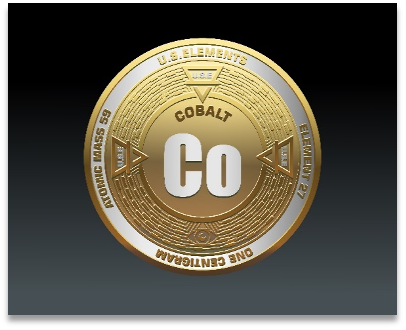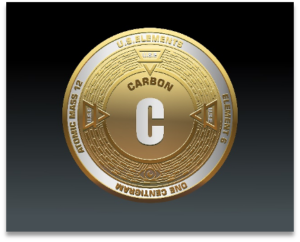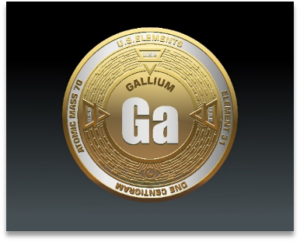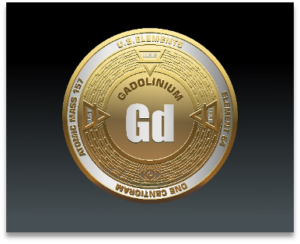Did you know that cobalt is an essential component in over 60% of the world’s lithium-ion batteries? This means that the future of electric vehicles, energy storage, and even portable electronics is intricately tied to this crucial metal. As the 10th installment in our “Securing America’s Future” series, we turn our attention to cobalt, a mineral that plays a pivotal role in America’s energy transition and national security.
Why the U.S. Needs It:
Cobalt’s primary use is in the production of lithium-ion batteries, which power everything from smartphones to electric vehicles (EVs) and grid-scale energy storage systems. As America transitions to a cleaner energy future, the demand for cobalt will only increase. In addition to its role in energy storage, cobalt is also used in aerospace components, military applications, and in certain medical devices. The U.S. needs cobalt not just for its technological advancements but also for maintaining its defense capabilities, as it is used in high-performance alloys that are critical for military equipment.
Where It’s Found Domestically:
The United States has limited cobalt production compared to global leaders such as the Democratic Republic of Congo (DRC), which dominates global supply. However, domestic sources are emerging, with cobalt being mined as a byproduct of copper and nickel in states like Alaska, Idaho, and Montana. Efforts are underway to increase domestic supply by developing new mines and exploring innovative ways to extract cobalt from mine tailings and recycled materials. While there is potential for U.S. production to grow, it is still heavily reliant on foreign sources, particularly from the DRC, which poses risks to supply security.
Economic Realities:
Cobalt is a high-value mineral, and its price has fluctuated dramatically in recent years due to market dynamics and geopolitical instability in key supplier regions. In 2023, cobalt prices surged, driven by the growing demand for electric vehicle batteries. However, supply chain disruptions, particularly those in the DRC, can create volatility. Increasing U.S. production or establishing strategic stockpiles could help mitigate the risks associated with cobalt’s price instability, benefiting both U.S. manufacturers and consumers.
Processing and Technological Innovations:
Traditionally, cobalt has been extracted through large-scale mining operations and refining processes that are energy-intensive and environmentally challenging. However, new innovations in extraction technologies, such as bioleaching and hydrometallurgical methods, offer more sustainable ways to recover cobalt from low-grade ores and recycling streams. These advancements could not only help reduce environmental impacts but also enhance the feasibility of domestic production in the U.S., helping to secure a more resilient supply chain.
Abundance and Waste Recovery Potential:
Cobalt is found in the Earth’s crust at a concentration of about 25 parts per million, which makes it relatively rare. However, because it is often mined as a byproduct of nickel and copper, cobalt recovery from other mining operations can help increase its availability. Furthermore, cobalt is highly recyclable, and significant amounts of cobalt are recoverable from used batteries, electronics, and other industrial processes. The growing emphasis on battery recycling offers a potential secondary supply source that could reduce the U.S.’s dependency on foreign sources.
Time to Market:
Cobalt is a critical input for the production of lithium-ion batteries, and as demand rises, ensuring the swift extraction, refinement, and processing of cobalt will be key to meeting the needs of the rapidly expanding clean energy sector. While the extraction of cobalt from new mines can take several years, advancements in recycling and the development of more efficient supply chains could expedite the time to market for this critical mineral.
Current and Future Applications:
Today, cobalt is essential for the manufacturing of batteries, high-performance alloys, and military technology. But in the future, its role may expand further. Researchers are exploring cobalt-free alternatives to lithium-ion batteries, but cobalt’s unique properties may continue to make it indispensable for high-density energy storage, especially as the world pushes for greener energy solutions. Emerging applications in the aerospace and medical fields further underscore the versatility of cobalt and its ongoing importance to national security and technological innovation.
Impact on Everyday Life:
From powering your smartphone to enabling the future of electric vehicles, cobalt quietly affects many aspects of daily life. Its applications in energy storage also make a direct impact on the transition to renewable energy. Without a stable and sustainable supply of cobalt, the pace of technological innovation and the shift to cleaner, greener energy could face significant setbacks.
Consequences of Supply Shortages:
Without sufficient cobalt supply, the U.S. risks falling behind in critical industries. Shortages could delay the development of electric vehicles, renewable energy projects, and advanced military technology. Given the growing reliance on cobalt for defense and energy infrastructure, disruptions in global supply chains would threaten not only economic stability but also national security.
Import Dependence:
As of 2023, the U.S. imports over 70% of its cobalt from countries like the DRC and Canada. The concentration of global cobalt production in politically unstable regions heightens the risks associated with relying on foreign suppliers. Securing a domestic supply of cobalt is critical to reducing dependence on unstable markets and ensuring a secure and resilient mineral supply chain.
Conclusion:
Cobalt is a cornerstone of modern technology and national security. As the U.S. works toward securing mineral independence, it must focus on increasing domestic production, improving recycling efforts, and ensuring the sustainability of its cobalt supply. The time to act is now—our future technological advancements, energy transition, and defense capabilities depend on it.
Stay tuned for next week’s article in our Critical Minerals Series, where we will delve into another mineral essential to securing America’s future.






